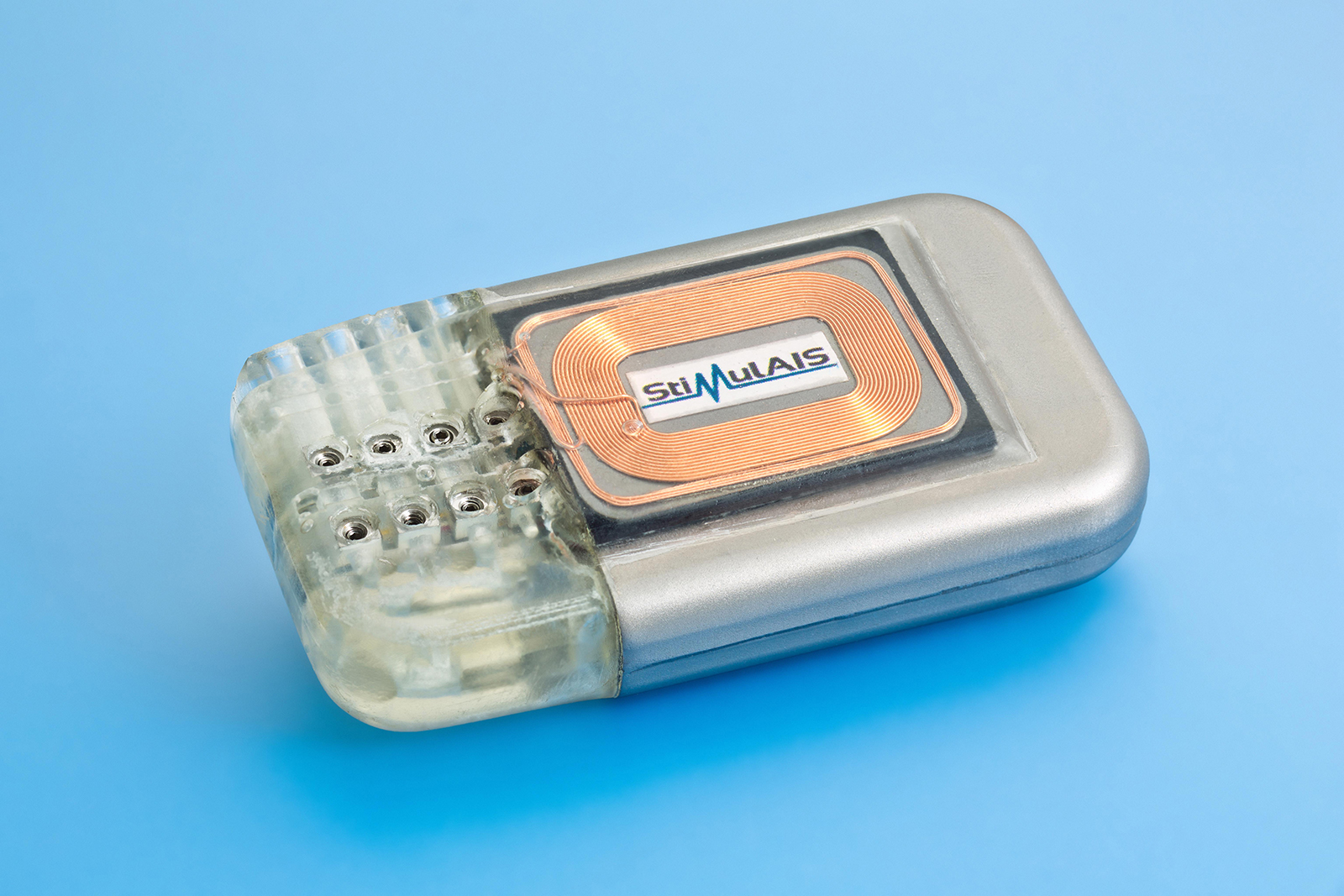Pulses for better posture
In an effort to find a better treatment for spinal curvature in children and young people, the EU’s “StimulAIS” project is focused on electrostimulation of muscles. Fraunhofer scientists worked with partners from industry and research to develop a prototype implant that would do the job.

“Sit up straight!” It’s an instruction almost every child has heard some day – but sometimes being reminded to consider your posture isn’t enough: two out of every hundred children and young people between the ages of 10 and 18 suffer from a curvature of the spine. Known as adolescent scoliosis, this growth disorder causes a lasting deformation of the back. These deformations are clearly visible and sufferers often feel disfigured by them.
In nine out of ten cases, the exact causes of the spinal curvature are unknown – what doctors refer to as idiopathic. Recent research suggests that adolescent idiopathic scoliosis, or AIS for short, is caused by a disease of the central nervous system. “According to this theory, the connection between the nerves and the relevant muscles is impaired, but only on one side of the back. When muscles on the healthy side contract, the muscles on the unhealthy side fail to receive the signal to balance the contraction out. This causes the spinal column to twist and buckle,” explains Dr. Andreas Heinig from the Fraunhofer Institute for Photonic Microsystems IPMS in Dresden. Building on this theory and working with research and industry partners in Spain and France, Heinig’s team has developed a novel approach to treat this form of scoliosis. It makes use of functional electrostimulation, whereby targeted electrical impulses replace the nerve signals that the disease has caused to be either too weak or completely absent. The aim is for the impulses to stimulate the deep muscles along the spinal column so that they build up the necessary counter-contractions to allow symmetrical growth. Within the space of just two years, the interdisciplinary European consortium was able to develop a prototype implant.
The implant’s principal function is to deliver a pattern of electrical pulses made up of active phases and rest periods, with doctors adjusting the pattern on an ongoing basis to match patients’ individual needs. The device’s core is implanted in the groin region. It contains circuit boards from which eight one-millimeter electrical cables lead to selected spots along the spinal cord. There, electrodes both stimulate the slack muscles on the side of the body neglected by the brain and monitor their activity. Several additional electrodes lead to the healthy side of the body to record muscle activity there – providing a set of reference values. An internal control mechanism compares these differing datasets with a view to constantly adjusting the muscle stimulation in line with the progress of the treatment.
It takes 50 pulses per second to stimulate the rotator muscles – and these pulses must be delivered over a long period of time. A typical training program involves six to eight hours of treatment every day, preferably during the night or at other quiet times, with several waves of muscle stimulation, each lasting a maximum of ten seconds, separated by at least ten minutes of rest.
Tailoring stimulation and resting times to the muscles
The battery the implant uses to carry out the standard program lasts around nine days before it needs to be recharged. Recharging takes roughly 90 minutes and is realized wirelessly via an inductive coupling. The data, too, are sent wirelessly from the implant to an external reader device – and vice versa. This makes it possible both to track the muscle activity measured in the body and to tailor each AIS patient’s stimulation and resting times on an ongoing basis depending on the state of their muscles. “Our partners in Valencia were responsible for designing the relevant system. Should the implant be given to children with AIS one day, it will be their attending physician who operates the reader device,” says Heinig.
Initial testing showed that the technology works in principle, with researchers sending data in both directions without a hitch. The muscle activation worked as planned, too. To position the fine electrodes in exactly the right place in the deep muscles along the spinal column, French company Synimed (another member of the consortium) developed special precision surgical instruments.
Compared to today’s therapies, which oblige children to wear a corset or which involve operations to fuse the spine with metal plates and pins, the concept of functional electrostimulation is superior: this minimally invasive implant-based treatment not only promises to prevent the worst, but also opens the way to achieving a lasting correction of deformations. Whether the concept proves itself in practice is something only time will tell, Heinig stresses: “We have clearly shown that this form of therapy is technically feasible. Now it’s up to future clinical studies to demonstrate that the therapy is medically effective and can cure or at least alleviate scoliosis.”